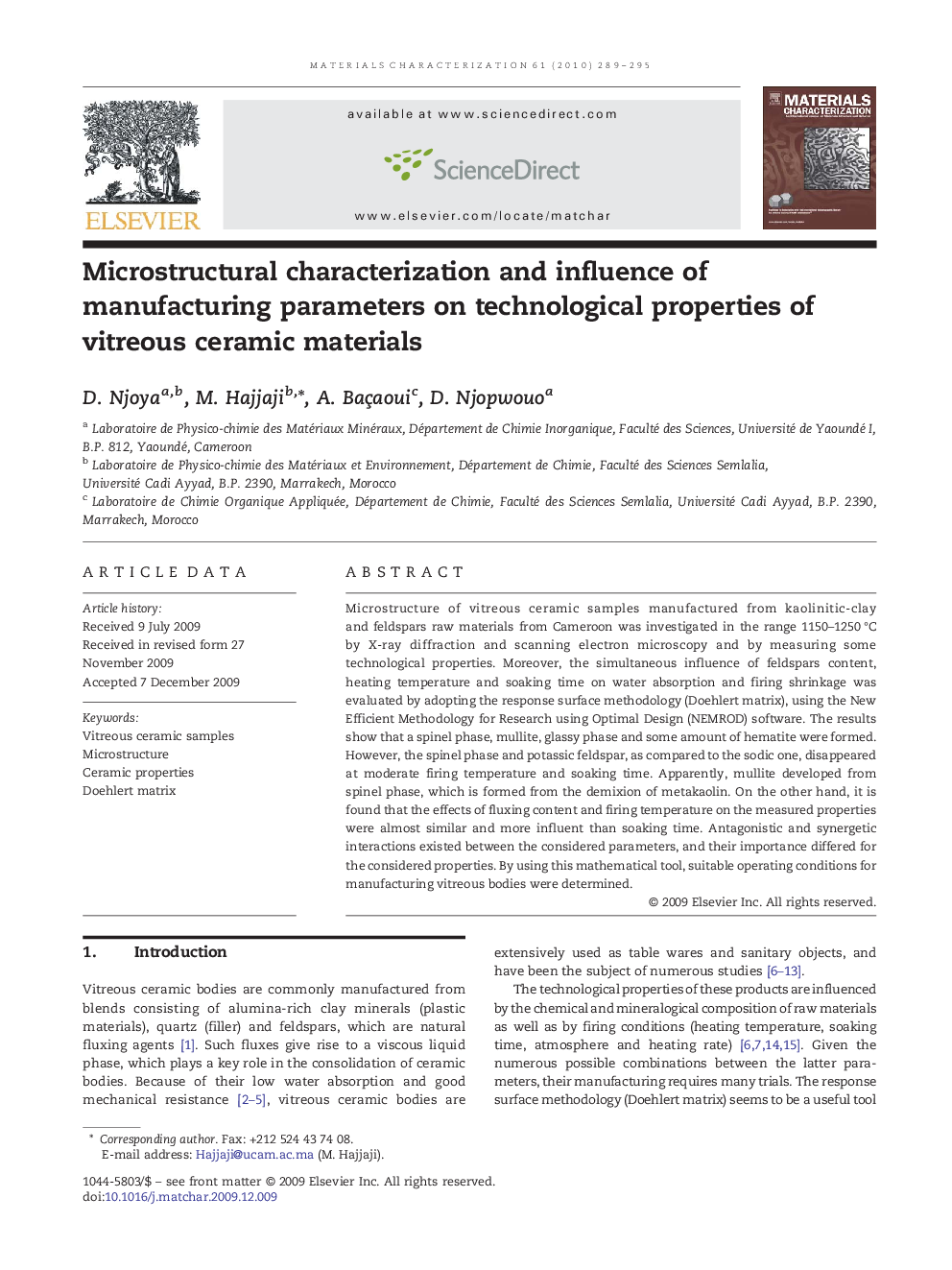| Article ID | Journal | Published Year | Pages | File Type |
|---|---|---|---|---|
| 1572271 | Materials Characterization | 2010 | 7 Pages |
Microstructure of vitreous ceramic samples manufactured from kaolinitic-clay and feldspars raw materials from Cameroon was investigated in the range 1150–1250 °C by X-ray diffraction and scanning electron microscopy and by measuring some technological properties. Moreover, the simultaneous influence of feldspars content, heating temperature and soaking time on water absorption and firing shrinkage was evaluated by adopting the response surface methodology (Doehlert matrix), using the New Efficient Methodology for Research using Optimal Design (NEMROD) software. The results show that a spinel phase, mullite, glassy phase and some amount of hematite were formed. However, the spinel phase and potassic feldspar, as compared to the sodic one, disappeared at moderate firing temperature and soaking time. Apparently, mullite developed from spinel phase, which is formed from the demixion of metakaolin. On the other hand, it is found that the effects of fluxing content and firing temperature on the measured properties were almost similar and more influent than soaking time. Antagonistic and synergetic interactions existed between the considered parameters, and their importance differed for the considered properties. By using this mathematical tool, suitable operating conditions for manufacturing vitreous bodies were determined.
